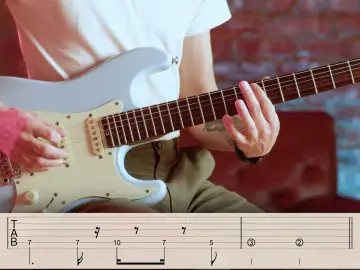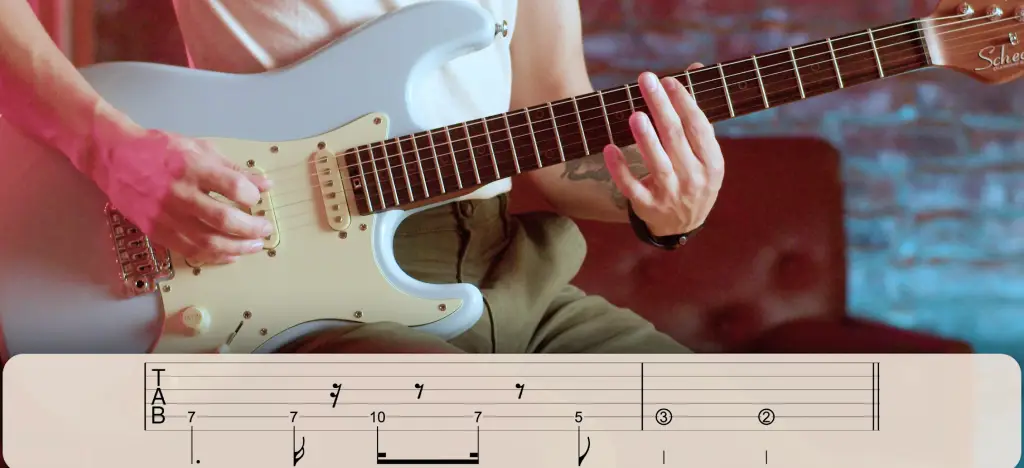If you’ve ever looked up how to play a song online, chances are you’ve seen guitar tabs (tablature). They’re everywhere. And for good reason — they’re the easiest way to learn songs without needing to read traditional sheet music.
But if you’re new to tabs, they can look a bit confusing. Don’t fret (bad joke) — it’s actually really simple. In this guide, I’ll walk you through how to read guitar tabs step by step, with real examples to try out and a free video playthrough to help you play along. By the end, you’ll be reading tabs and playing real songs today.
- How to read your first guitar tab
- What is a guitar tab?
- How a basic guitar tab looks
- Guitar tab symbols & techniques
- Most popular guitar riff
- Video: 'Seven Nation Army' riff
- More beginner guitar riffs
- Ways guitar tabs are written
- Pick technique for beginners
- Common mistakes when reading guitar tabs
- Learn to read tabs, play riffs, and build real guitar skills
- FAQs: Guitar tabs
Quick overview: Learn the 6-line tab layout (high E to low E), how fret numbers map to frets, and how to spot chords vs riffs — perfect for picking up your first songs fast.
How to read your first guitar tab
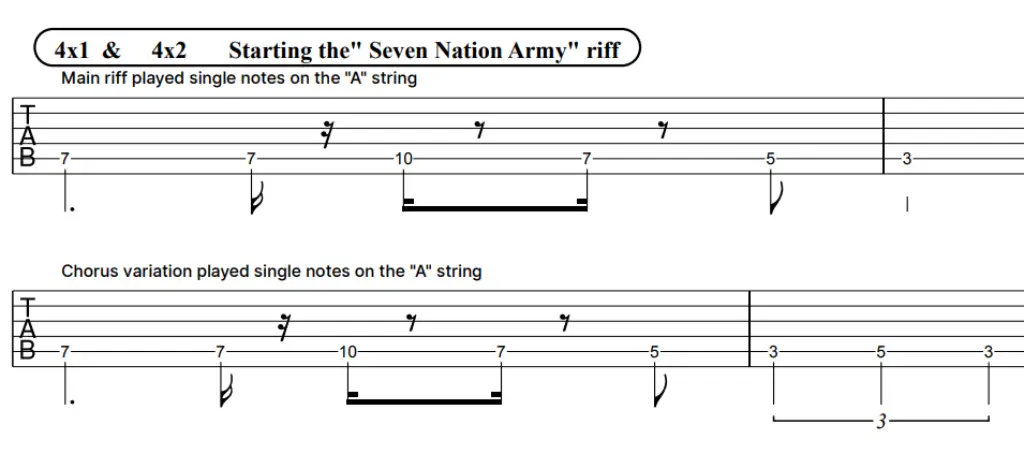
Step 1: Get familiar with the layout
Tabs show 6 horizontal lines — each one is a guitar string. The top line is your high E (thinnest string), and the bottom is your low E (thickest string).
Step 2: Read left to right
Tabs move just like text. You play the numbers from left to right. If you see “3,” play the 3rd fret. No number? Don’t play that string.
Step 3: Play one note at a time
Try playing a “3” on the bottom line. That means 3rd fret on the low E. Just one finger, one note — you’re already doing it.
Step 4: Watch for timing
Most basic tabs won’t show rhythm. Listen to the song or find a video so you know when to play each note.
Step 5: Try a simple riff
Something like the start of Smoke on the Water works perfectly. It’s mostly one string and all single digits — perfect for first-time tab readers.
What is a guitar tab?
Unlike traditional sheet music, which uses musical notes on a staff, guitar tabs give you a simple visual guide for where to place your fingers.
Each number represents a fret
Each line represents a string
No need to read standard notation — just follow the numbers and play
This method has become the go-to for millions of self-taught players because it strips away complexity and gets you playing faster.
Let's start with the basics
How a basic guitar tab looks
A basic guitar tab looks something like this: How to read a guitar tab
How to read a guitar tab
✅ The top line is the highest-pitched string (high E)
✅ The bottom line is the lowest-pitched string (low E)
✅ Numbers tell you which fret to press on each string
✅ A "0" means play the string open (without pressing any frets)
How chords are written in tabs
Tabs don’t just show individual notes — they can also show chords, with numbers stacked vertically.
Take a look at this B Major chord written as a tab:
e|--2--|
B|--4--|
G|--4--|
D|--4--|
A|--2--|
E|--x--|The “x” means do not play that string.
The numbers tell you exactly which frets to hold down.
This is a barre chord, which can be tricky for beginners. If you’re struggling with these, you might want to start with simpler open chords.
💡 ARTMASTER TIP: Need more help with chords? Check out our guide to reading guitar chord charts.
Guitar tab symbols & techniques
Tabs don’t just tell you which frets to press — they also include symbols that show how to play each note.
Here’s a quick breakdown of the most common ones:
h | Hammer-on | 5h7 (play the 5th fret, then hammer onto the 7th) |
p | Pull-off | 7p5 (pluck the 7th fret, then pull off to the 5th) |
/ or \ | Slide | 5/7 (slide from the 5th fret to the 7th) |
b | Bend | 7b9 (bend the 7th fret up to the pitch of the 9th) |
x | Mute the string | --x-- (lightly rest your finger on the string to create a percussive sound) |
These symbols add the nuances that make your playing sound expressive rather than robotic. You’ll find that once you get comfortable with them, they start to feel like part of the language of your instrument.
💡 ARTMASTER TIP: Want to take your technique further? From hammer-ons to palm muting, these essential guitar techniques will make everything you play sound tighter, smoother, and way more confident - 7 essential guitar techniques every player should know.
Most popular guitar riff
The best way to practice reading tabs is by learning actual songs. This is one of the most popular beginner guitar tabs:
🎸 Seven Nation Army – The White Stripes
This riff is perfect for absolute beginners because it's on one string and easy to follow.  One-string riffs are great for developing your picking accuracy without worrying about complex finger movements.
One-string riffs are great for developing your picking accuracy without worrying about complex finger movements.
Video: 'Seven Nation Army' riff
💡 ARTMASTER TIP: Watch Dre DiMura play 'Seven Nation Army' to a backing track. Have a go yourself and play along!
More beginner guitar riffs
Here are a couple more simple riffs to get you started:
🎸 Smoke on the Water – Deep Purple
✔ One of the most famous beginner riffs of all time.
e|--------------------------|
B|--------------------------|
G|--0--3--5--|--0--3--6--5--|
D|--0--3--5--|--0--3--6--5--|
A|--------------------------|
E|--------------------------|It’s simple but uses powerful note combinations — a great introduction to rock rhythm.
🎸 Sweet Child O’ Mine – Guns N’ Roses
✔ A step up—requires precise picking but sounds amazing.
e|--15----14----12----15----14----12----|
B|-----15----15----15----15----15----15-|
G|--------------------------------------|
D|--------------------------------------|
A|--------------------------------------|
E|--------------------------------------|This is great for developing your right-hand picking control and learning to play melodies cleanly.
Ways guitar tabs are written
 Not all guitar tabs look the same. The video playthrough in this article, for example, uses a rhythm-based tab (on the right) instead of a standard text format.
Not all guitar tabs look the same. The video playthrough in this article, for example, uses a rhythm-based tab (on the right) instead of a standard text format.
Types of guitar tabs you may see
Basic text tabs – The most common format, using lines for strings and numbers for frets.
Rhythm-based tabs – Space numbers according to timing, helping you play in time.
Standard notation + tab – Includes traditional sheet music above the tab for extra detail.
Regardless of the format, the numbers always tell you which frets to play — so once you learn the basics, you can read any style of tab.
Pick technique for beginners
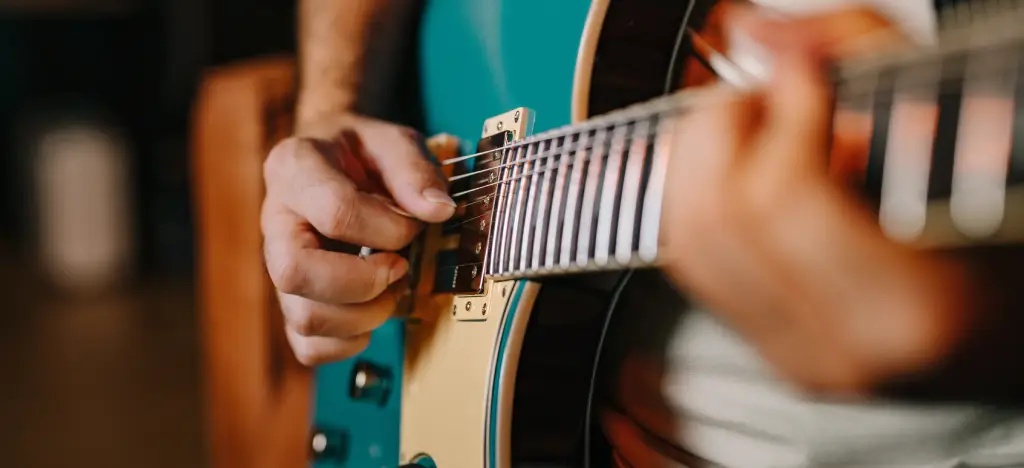 Just to help you get started, here’s a little pick advice when trying these riffs:
Just to help you get started, here’s a little pick advice when trying these riffs:
Hold it right – Grip the pick between your thumb and the side of your index finger, leaving just a small part exposed.
Use alternate picking – For single-note riffs, down-up-down-up picking keeps your playing smooth and efficient.
Angle the pick slightly – This helps it glide over the strings instead of catching.
Keep your wrist loose – Stiffness makes playing harder. Relax your wrist for better control and comfort.
💡 ARTMASTER TIP: Want to sound more like your guitar heroes — even without their gear? It’s mostly about your hands, not your pedals. Here’s how to get closer to their tone with the technique you already have
Common mistakes when reading guitar tabs
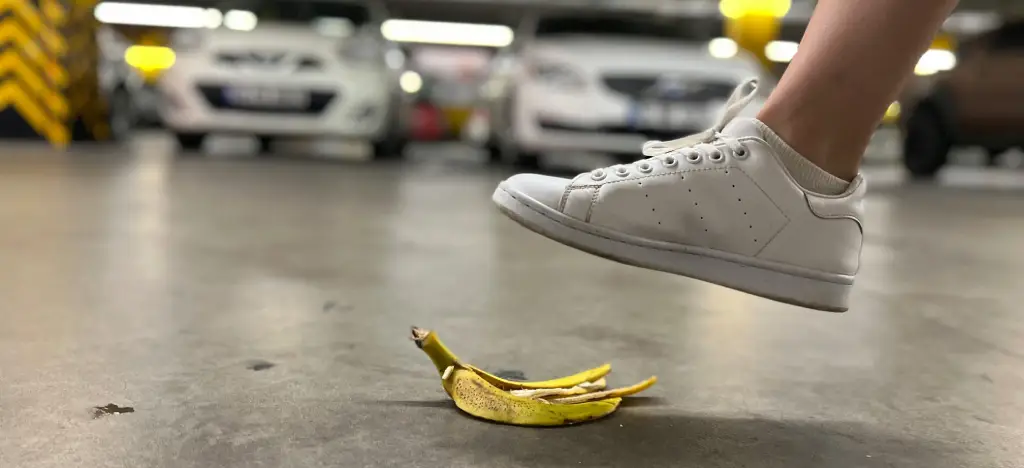 Every beginner makes mistakes when learning how to read guitar tabs, but knowing what to watch out for can help you improve faster.
Every beginner makes mistakes when learning how to read guitar tabs, but knowing what to watch out for can help you improve faster.
Playing the wrong strings – If a string doesn’t have a number, don’t play it. Tabs only show the notes you need, so avoid strumming extra strings.
Ignoring tab symbols – Techniques like hammer-ons (h), pull-offs (p), slides (/ or ), bends (b), and muted notes (x) add expression. Skipping them makes your playing sound flat.
Forgetting about rhythm – Tabs don’t show timing. Listen to the original song or use a metronome to match the correct speed and feel.
Learn to read tabs, play riffs, and build real guitar skills
Now that you know how to read guitar tabs, start practicing real songs. The more you play, the easier it becomes.
Want to go beyond just following numbers on a page? Dre DiMura’s Electric Guitar for Beginners course is designed to help you read tabs, play iconic riffs, and develop real guitar skills from day one. With 120M+ TikTok views, Dre has helped thousands of guitarists improve their technique, and now you can learn directly from him.
What you’ll learn:
✔ How to read and play guitar tabs properly—no more guessing
✔ Essential picking techniques for better accuracy and speed
✔ Beginner-friendly riffs like Seven Nation Army and Satisfaction
✔ Power chords and open chords so you can play full songs
✔ Rhythm and strumming patterns to help you stay in time
✔ The pentatonic scale and basic improvisation to start making your own music
✔ Full play-along backing tracks so you can practice with real music
Try it out with our 7-day free trial!
FAQs: Guitar tabs
💬 Why use tabs instead of sheet music?
Tabs are easier to read — they show you exactly where to put your fingers, without needing to understand traditional notation. That’s why most guitarists start here.
💬 What do the numbers mean in guitar tabs?
Each number tells you which fret to press on a string. A "3" on the low E string means play the 3rd fret on the thickest string.
💬 Which string is which in a tab?
The top line in a tab is your thinnest string (high E), and the bottom line is your thickest (low E). It’s flipped from what you see when holding the guitar — but you’ll get used to it fast.
💬 How do I read chords in a tab?
When numbers are stacked vertically, play them at the same time — that’s a chord. If they’re spread across the line, play them one after the other — that’s a riff.
💬 Can tabs show rhythm and timing?
Basic tabs don’t include timing — but you can listen to the song or watch a video to match the rhythm. Some advanced tabs (like Guitar Pro files) do show timing.
💬 How do I practise using tabs?
Start with simple riffs or single-note melodies. Play slowly, make sure every note rings clearly, and gradually build up speed.
💬 Are tabs enough to become a good guitarist?
They’re a great starting point — especially for learning songs. But to fully develop as a player, it helps to also work on technique, theory, and ear training.
About the author
Matt Ford is a musician, teacher, writer, and lifelong student of sound.
With years of experience in both performing and teaching, he shares practical advice through ArtMaster to help musicians at every level build skill and confidence in their playing.
